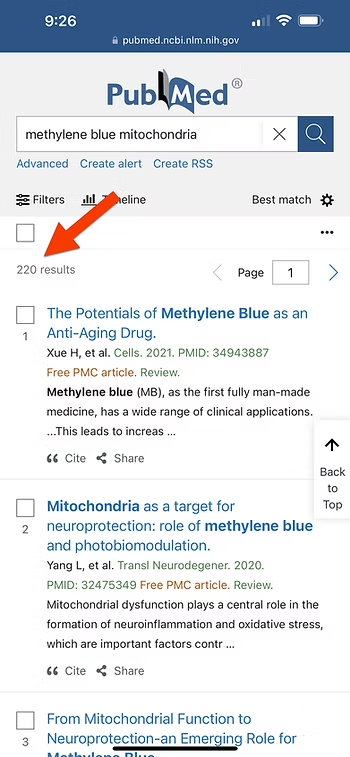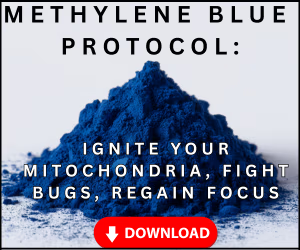Introduction
Have you ever encountered the enigmatic properties of methylene blue and its profound impact on mitochondrial function? Allow me to elucidate this fascinating connection. Within the vast repository of knowledge known as PubMed, an extensive compilation of research endeavors from across the globe, methylene blue and mitochondria emerge as a captivating subject. Immerse yourself in this exploration of over 220 scholarly articles, all delving into how methylene blue exerts its influence on your mitochondria. Let us embark on a journey to unravel three pivotal mechanisms through which methylene blue offers support to these vital cellular powerhouses.
Electron Navigation and Amplified ATP Production
As we venture into the intricate landscape of mitochondria, methylene blue unveils its first remarkable feat: facilitating electron flow within these energy factories. By streamlining the passage of electrons, this enigmatic substance heightens adenosine triphosphate (ATP) production, the quintessential energy currency of our cells. Picture methylene blue as a conductor orchestrating a harmonious symphony within the mitochondrial realm.
Enhanced Membrane Permeability and Intricate Exchange
Methylene blue’s second act unfolds as it confers enhanced permeability upon the mitochondrial membranes. Through this biochemical wizardry, these membranes become more receptive, allowing seamless passage of vital substances into and out of the mitochondria. Imagine methylene blue as a skillful gatekeeper, deftly facilitating the exchange of essential components, fostering a state of cellular equilibrium.
Our journey through the methylene blue narrative concludes with its exceptional ability to safeguard mitochondrial integrity. This extraordinary substance acts as a sealant, mending any microscopic breaches that could undermine the mitochondria’s functionality. By preventing the occurrence of leaky mitochondria, methylene blue ensures the preservation of ATP production, the lifeblood that fuels our cellular vitality.
Recommended Dosage and Call to Action
Now, as we near the end of our expedition, I urge you to consider integrating methylene blue into your wellness routine. The recommended dosage ranges from 8mg to 16mg, an appropriate starting point for exploring its potential benefits. (This is a proper methylene blue dose for UTIs as well if that is one reason for considering taking it.) Embrace this opportunity to embark on a journey of mitochondrial empowerment. Share this transformative knowledge with those dear to you, as we strive to unlock the secrets of optimal well-being together.
Conclusion
In the intricate tapestry of human biology, methylene blue emerges as a potent ally in nurturing the delicate dance between our mitochondria and vitality. Its multifaceted actions, from facilitating electron navigation and bolstering ATP production to enhancing membrane permeability and fortifying mitochondrial integrity, make methylene blue an enigmatic force to be reckoned with. Embrace the power of this remarkable substance and witness the profound impact it can have on your well-being.
Frequently Asked Questions (FAQ)
Methylene blue supports mitochondrial function by facilitating electron flow, enhancing ATP production, and maintaining mitochondrial integrity. It acts as a cellular “conductor,” ensuring mitochondria work efficiently.
Methylene blue improves mitochondrial function through three key mechanisms: 1) streamlining electron flow to increase ATP production, 2) enhancing mitochondrial membrane permeability for better substance exchange, and 3) protecting mitochondria from leaks to preserve energy production.
The typical recommended dosage for mitochondrial support ranges from 8mg to 16mg per day. This dosage is also considered safe when taken for urinary tract infections (UTIs) in certain contexts.
Yes. By boosting ATP production, improving mitochondrial membrane function, and maintaining mitochondrial integrity, methylene blue can enhance cellular energy, support brain function, and promote overall vitality.








